Ubiquitination/ Proteasome
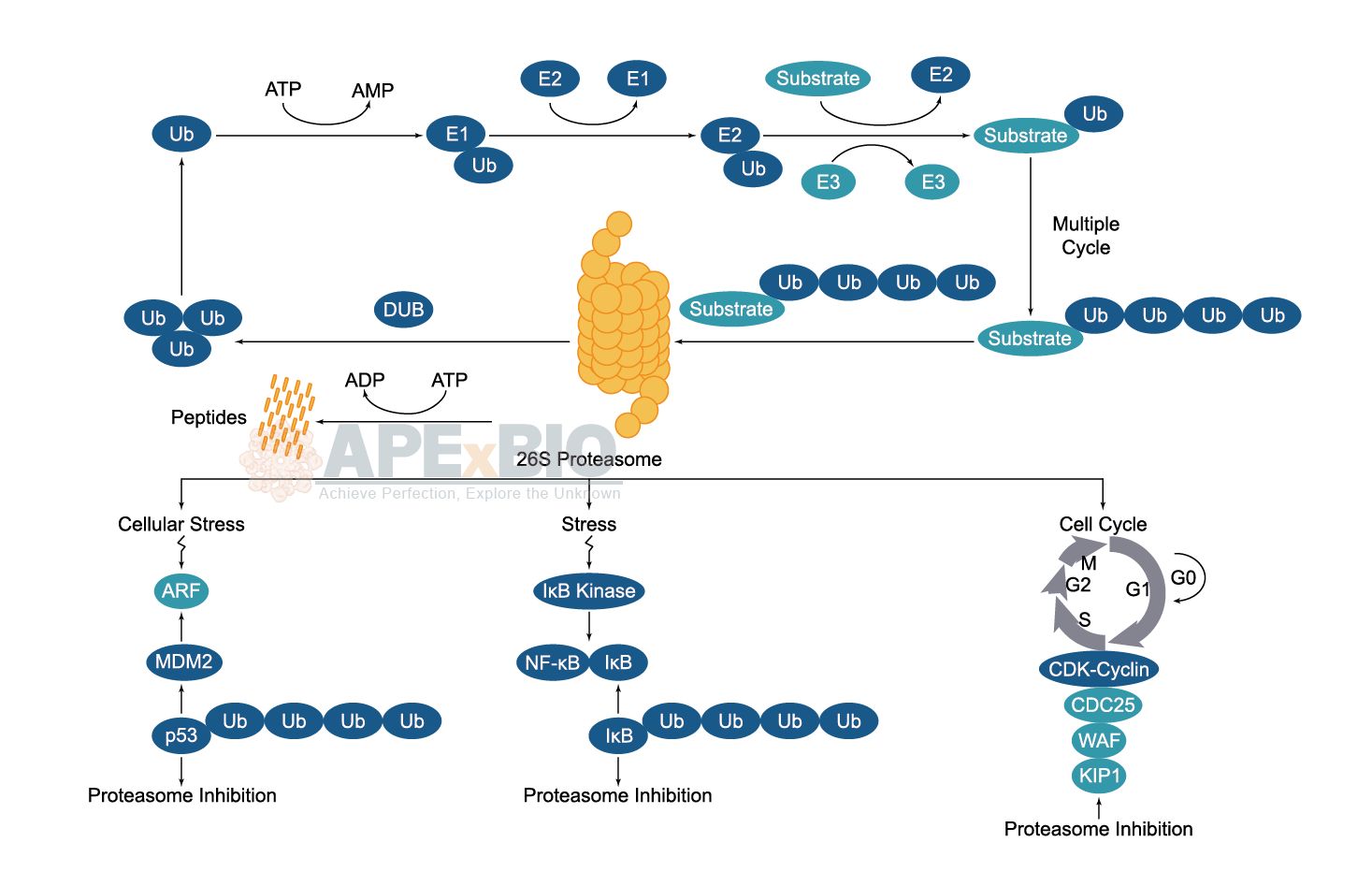
Once the substrate protein is labeled, proteasome will bind to a polyubiquitin chain, allowing the degradation of the labeled protein. The polyubiquitinated target protein is then recognized and degraded by the 26S proteasome. Deubiquitinating enzymes (DUBs) reverse the process of ubiquitination by removing ubiquitin from its substrate protein. Dysregulation of the ubiquitin-proteasome system has been linked to cancer, diabetes, cardiovascular and neurodegenerative diseases etc.
-
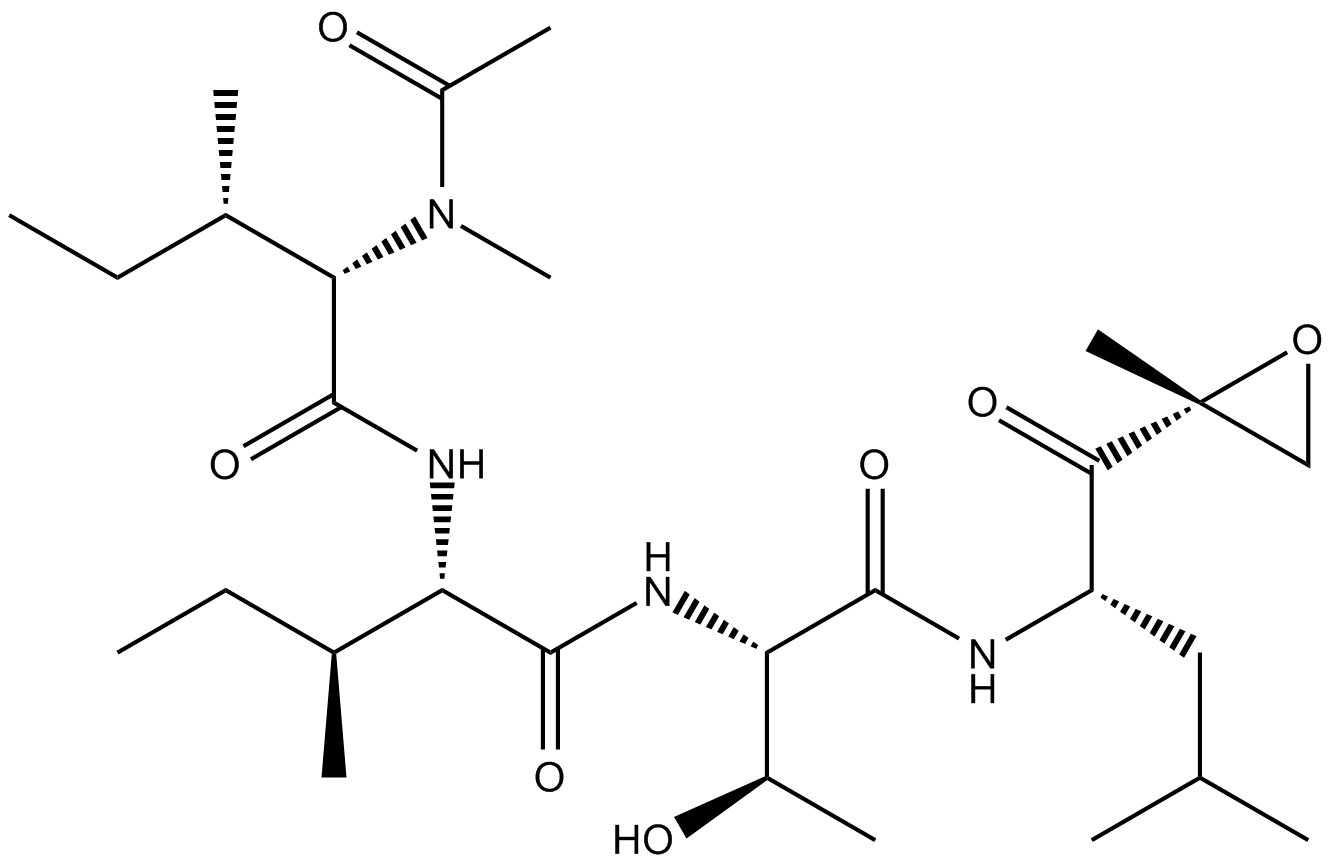 A2606 Epoxomicin25 CitationSummary: Proteasome inhibitor
A2606 Epoxomicin25 CitationSummary: Proteasome inhibitor -
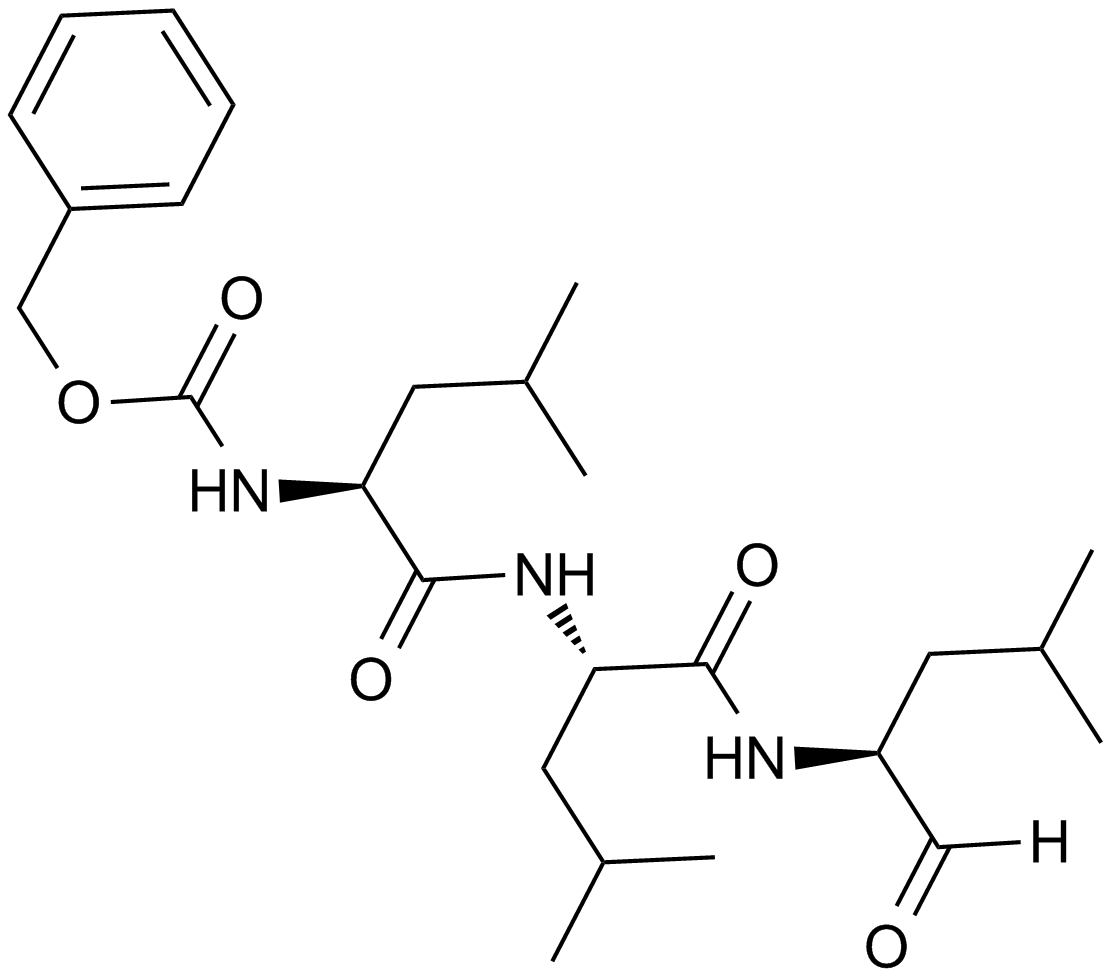 A2585 MG-13226 CitationTarget: ProteasomeSummary: Proteasome inhibitor, Cell permeable, reversible
A2585 MG-13226 CitationTarget: ProteasomeSummary: Proteasome inhibitor, Cell permeable, reversible -
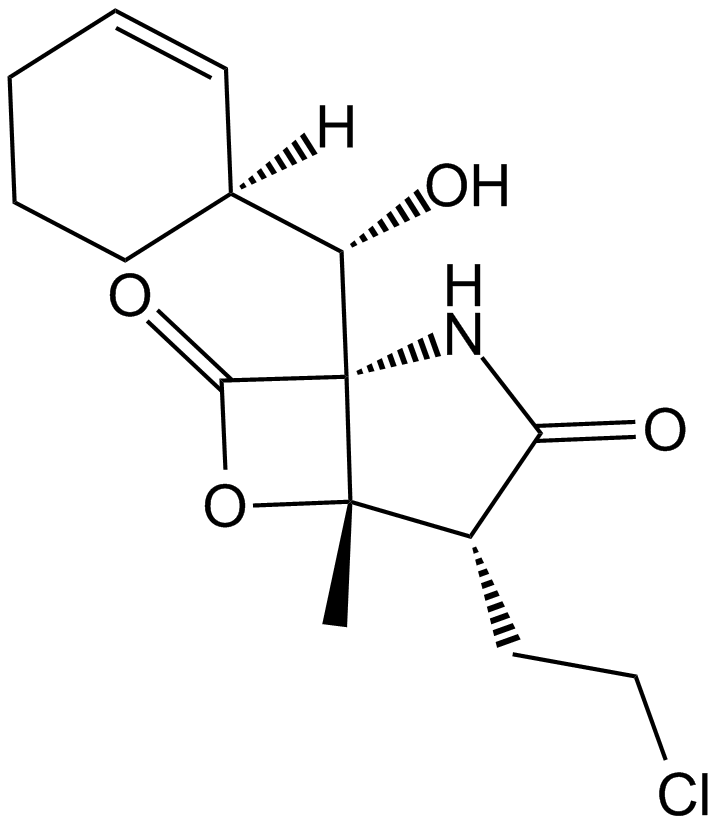 A4010 Salinosporamide A (NPI-0052, Marizomib)Target: ProteasomeSummary: 20S proteasome inhibitor
A4010 Salinosporamide A (NPI-0052, Marizomib)Target: ProteasomeSummary: 20S proteasome inhibitor -
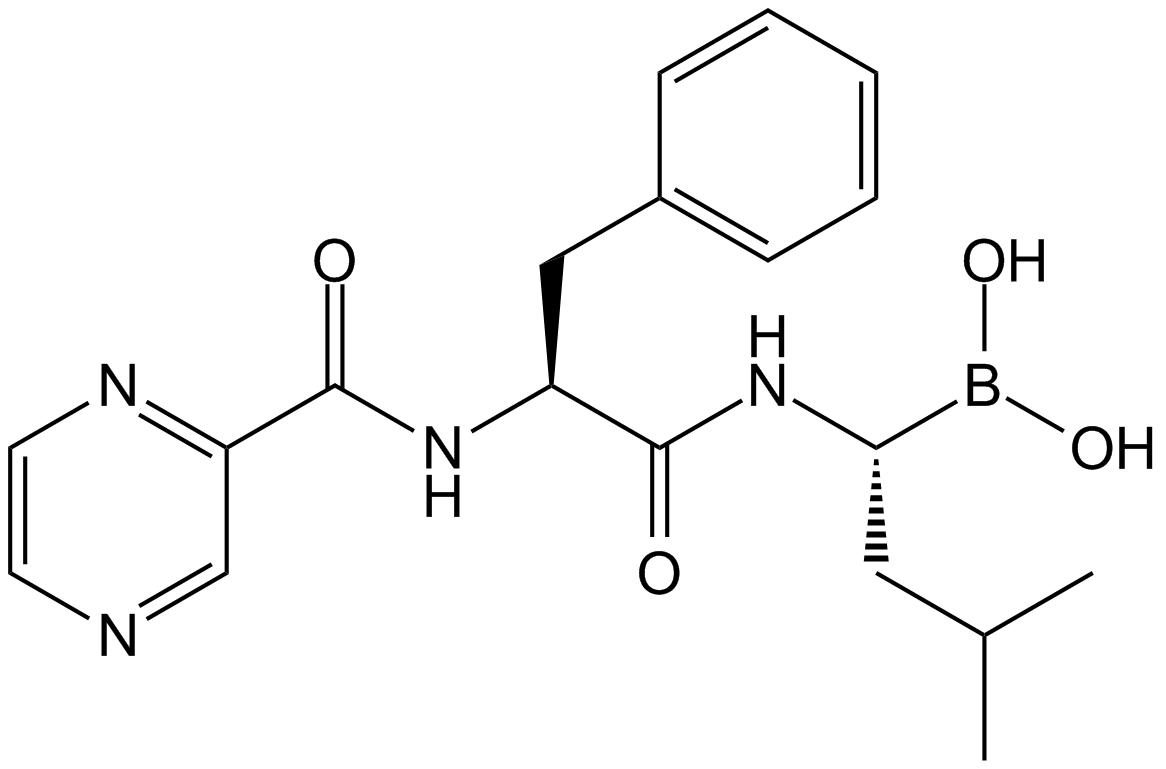 A2614 Bortezomib (PS-341)24 CitationTarget: ProteasomeSummary: Proteasome Inhibitor
A2614 Bortezomib (PS-341)24 CitationTarget: ProteasomeSummary: Proteasome Inhibitor -
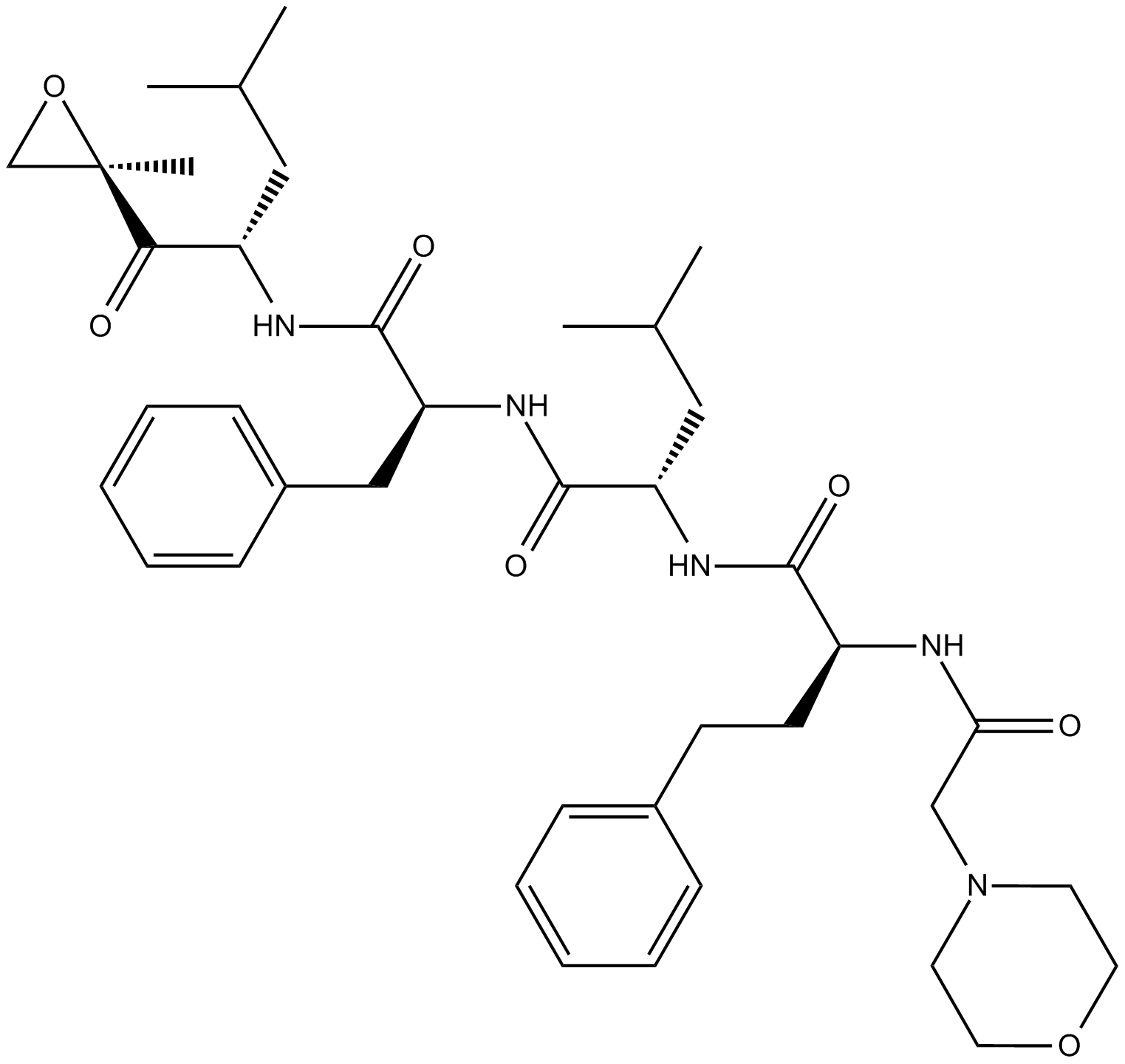 A1933 Carfilzomib (PR-171)10 CitationTarget: ProteasomeSummary: Proteasome inhibitor, epoxomicin analog
A1933 Carfilzomib (PR-171)10 CitationTarget: ProteasomeSummary: Proteasome inhibitor, epoxomicin analog -
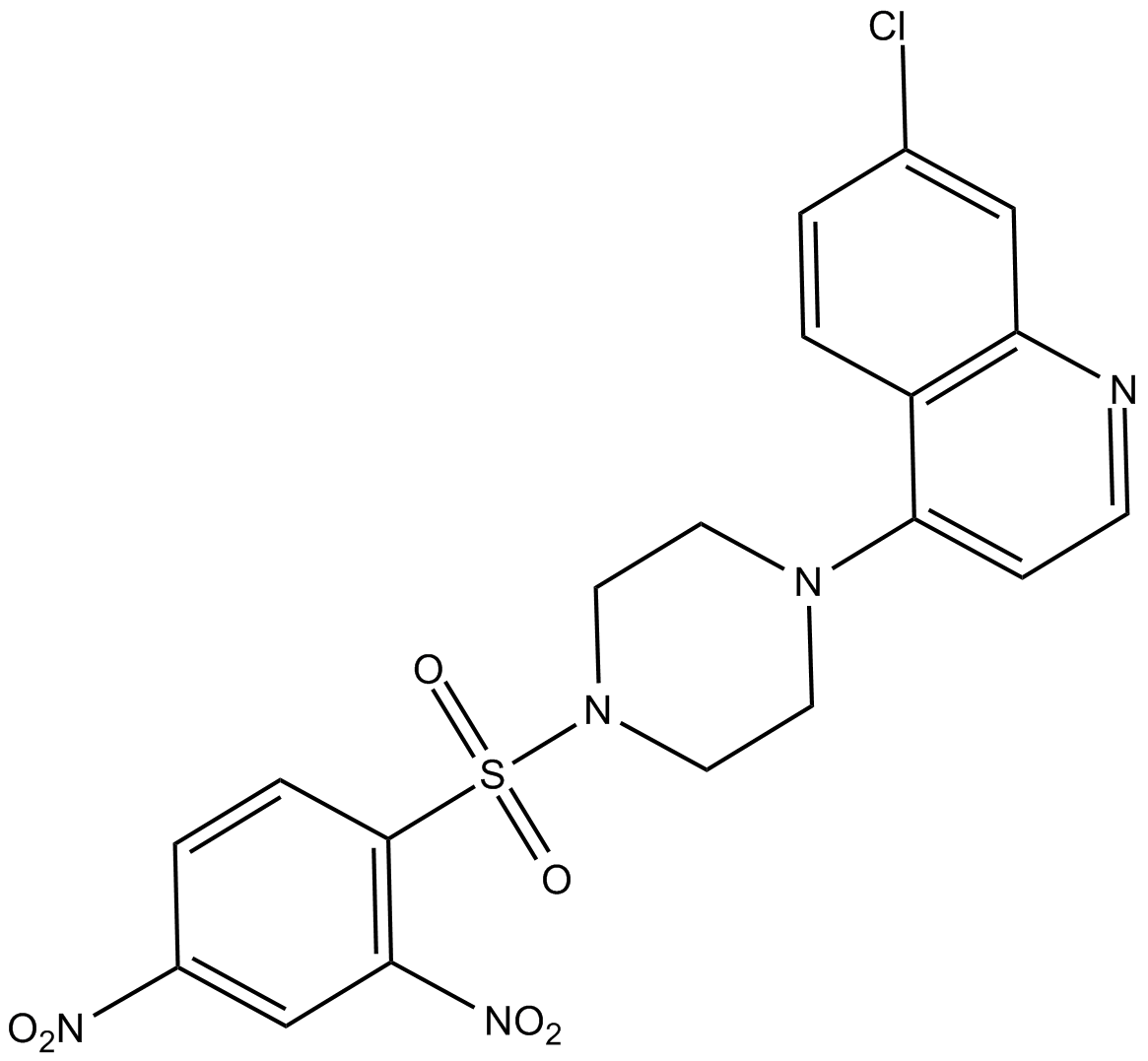 B6026 VR23Target: ProteasomeSummary: proteasome inhibitor
B6026 VR23Target: ProteasomeSummary: proteasome inhibitor -
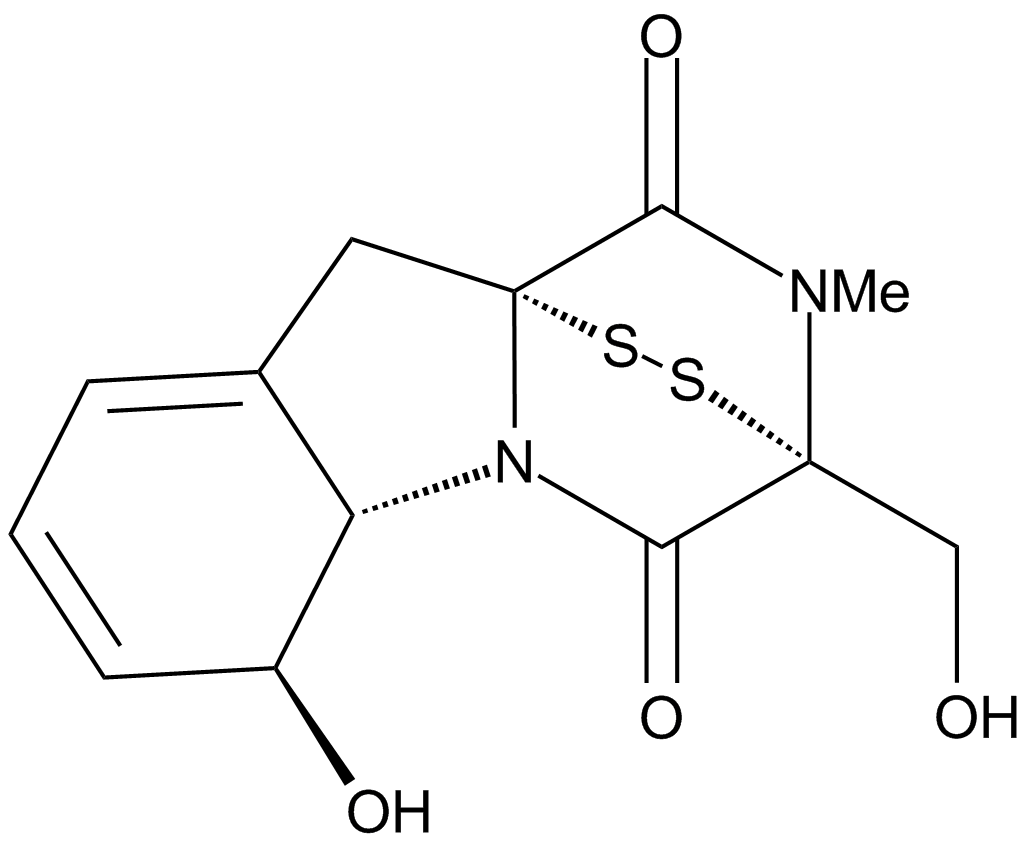 A4443 Gliotoxin1 CitationTarget: 20S proteasomal chymotrypsin|Geranylgeranyltransferase I|FarnesyltransferaseSummary: 20S proteasome inhibitor
A4443 Gliotoxin1 CitationTarget: 20S proteasomal chymotrypsin|Geranylgeranyltransferase I|FarnesyltransferaseSummary: 20S proteasome inhibitor

